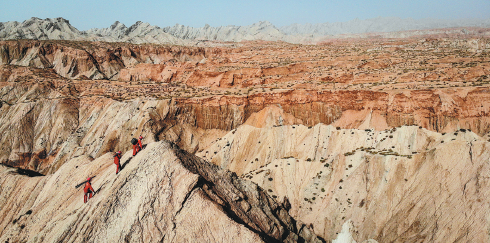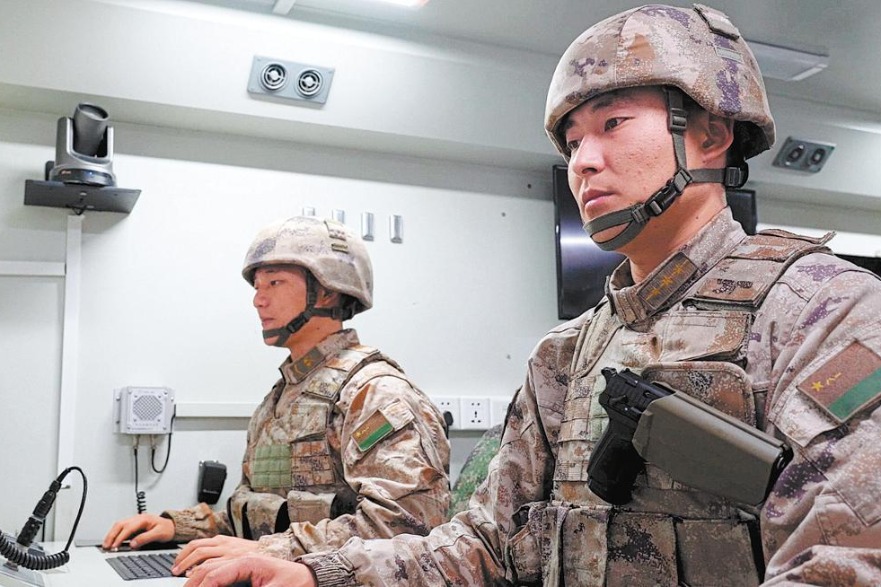DIGGING for DREAMS

The Qiulitag Mountains, which straddle the counties of Kuqa, Xinhe and Baicheng in Northwest China's Xinjiang Uygur autonomous region, are characteristic of uninhabited mountainous area without roads and communications. To get a true picture of the nature here, one has to pick treacherous paths and unfrequented jungles for explorations, discovering many grotesque mountains and ravines with a vertical drop of more than 600 meters. It is hailed as "a place where neither the Mongolian gazelle nor the eagle can reach".
Despite the harsh natural conditions deep in the mountains, it is one of China's strategic resource relay stations where petroleum geophysical surveyors set up camps, using both the most primitive manual labor and the most advanced technical means to challenge world-class exploration problems and their own limits. Not far away from the Qiulitag Mountains, a huge gas field powers China's massive west-to-east gas transportation project, providing energy for more than 3,000 enterprises and 400 million residents in more than 120 cities.
On Nov 15, the data synthesis of the 3D geological prospecting project undertaken by the No 1 mountain team of the Southwest Geophysical Prospecting Branch at BGP, China National Petroleum Corporation has all ended, signaling a completion of the geophysical prospectors' exploration in Qiulitag Mountains. A proper geophysical survey will get them over the first hurdle of oil and gas production. Professionals compare the task to CT for the mother Earth. Where there is oil and gas, they bring equipment to conduct surveys. This year, the team has made a breakthrough in employing new technologies, equipment and management methods in the project.
The main job of a geophysical prospector is to collect information on the topography and geomorphology, climatic conditions, human geography, geological disasters, transportation and communications in the area in the early stage of construction, and accurately pinpoint the location of obstacles such as high mountains, reservoirs, oil field facilities, high-voltage lines, and confirm various types of obstacles in detail. At the same time, it is necessary to identify the hazards and risks involved in the operation in advance to lay a solid foundation for the subsequent mining task.
Due to the steep and complex terrains in the southern mountain range, the complex construction area is the most thorny issues as different collection methods and equipment have to be used in different areas. For the first time, the project adopts a combination of mountain operation equipment and marine geophysical collection equipment. Every day, the workers fly between the mountains and the camp by helicopter, which not only saves travel time, but also provides a guarantee for the safety of the workers. However, reaching the top of the mountain means that the difficulties are only just beginning. The exploration workers also need to dangle in the steep mountains with the aid of a safety rope fixed on the top of the mountain, holding a steel drill in their hands. While climbing down the mountain, they have to bury the geophones into the designated position.
Every night, the team analyzes the bottlenecks for the day, discusses and adjusts the construction plan and arrangement in a targeted manner to ensure the overall orderly progress. In addition, the problems that occur on the site every day must be resolved within an hour. Wang Duohan, manager of the No 1 team says timely and effective collective decision-making is a powerful tool for steering the construction of the project. Preparations for the project began in August, and after 41 days, the field work was fully completed on Oct 28. Most employees chose to be transferred to desert projects to continue their work.




Today's Top News
- PLA fully capable of crushing secessionist attempts
- China holds central rural work conference
- President Xi to deliver New Year's message to ring in 2026
- Xi's diplomacy in 2025: Shedding light on a world at crossroads
- FTP has given Sanya a complete makeover
- China to apply lower import tariff rates to unleash market potential






























